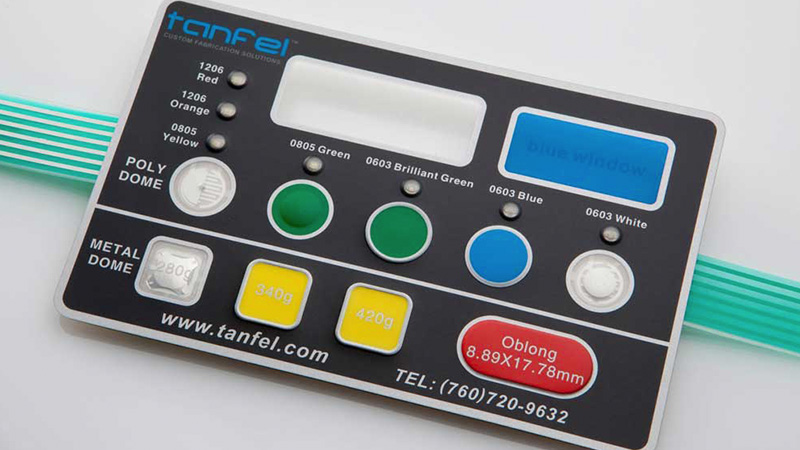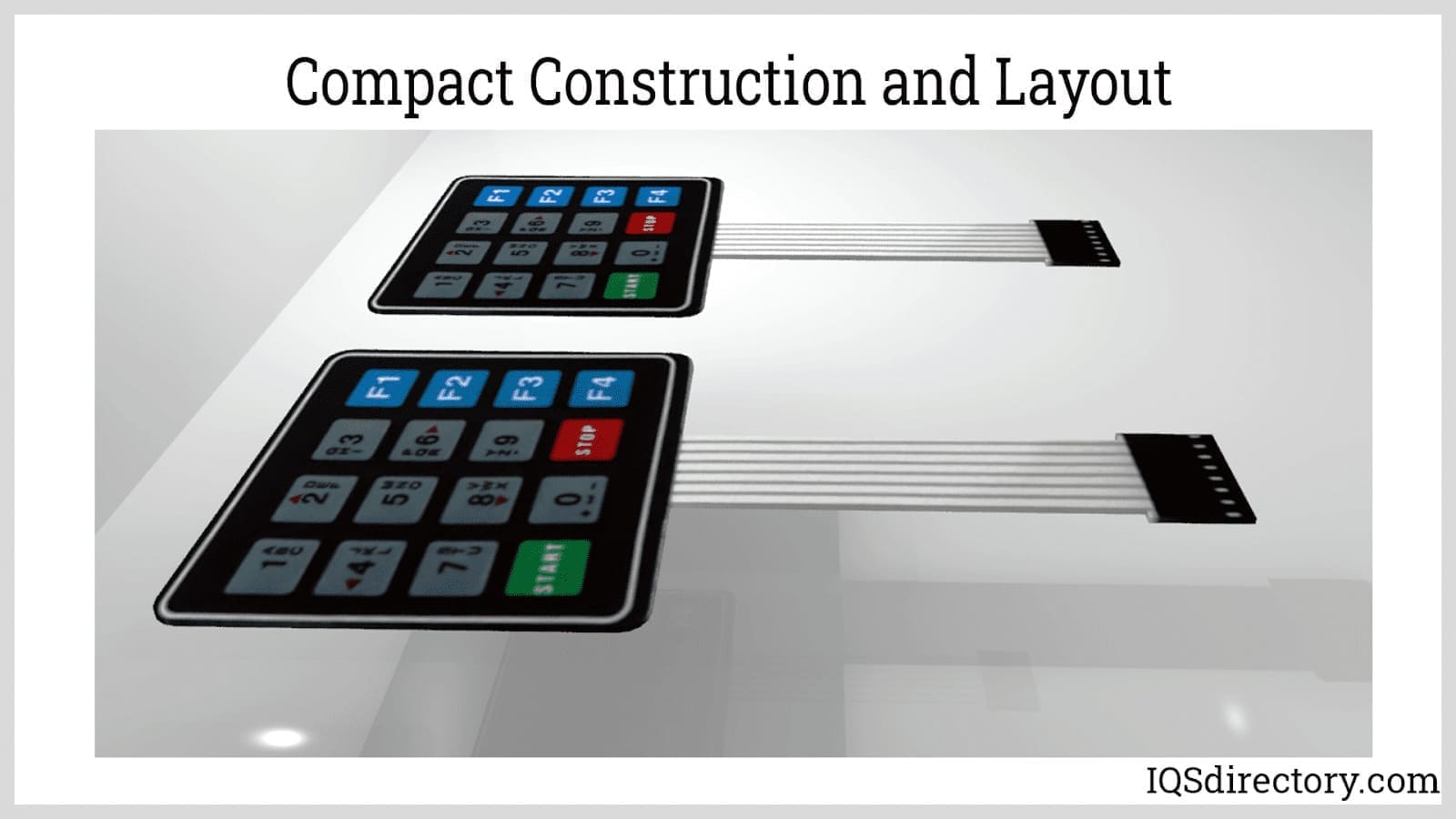Choosing the Right Membrane Switches for Your Product’s Needs
Choosing the Right Membrane Switches for Your Product’s Needs
Blog Article
Recognizing the Significance of Membrane Switches in Interface
Membrane buttons are important elements in the design of efficient customer interfaces, facilitating not only performance however likewise enhancing aesthetic allure and user interaction. As we check out the different benefits and future fads associated with Membrane modern technology, it comes to be clear that these switches are more than just elements; they represent a merging of advancement and usefulness.
What Are Membrane Buttons?

The spacer layer, which contains sticky homes, permits the separation of the circuit layer from the overlay, ensuring that the button stays in a non-activated state up until pressed. When pressure is related to the overlay, it presses the spacer layer, connecting the void and finishing the circuit in the underlying layer. This design not just lowers the physical area required for typical mechanical buttons yet likewise boosts the resilience of the tool, as Membrane switches are usually resistant to dust, dampness, and other environmental variables.
Typically located in applications varying from customer electronics to clinical devices, Membrane switches are indispensable to contemporary technology, supplying a reliable and easy to use user interface that lines up with modern design needs.
Advantages of Membrane Buttons
While countless button innovations exist, Membrane Switches offer distinctive advantages that make them specifically desirable in various applications. Among the primary benefits of Membrane buttons is their compact style, which permits space-saving applications in tools where property is restricted. Their thin account not just enhances aesthetic charm yet also facilitates lightweight construction.
One more significant advantage is their resistance to ecological variables. Membrane switches are commonly secured against moisture, dirt, and contaminants, making them optimal for usage sought after environments, such as medical gadgets and commercial tools. This toughness extends the life-span of the switch, decreasing maintenance expenses and boosting integrity.
Moreover, Membrane buttons can be customized to meet certain layout requirements, integrating one-of-a-kind graphics and shades that enhance customer interaction. Their responsive responses alternatives can also be customized to provide a rewarding individual experience. Furthermore, Membrane buttons are cost-effective, especially in high-volume applications, as they can be generated successfully.
Applications in Various Industries

In the consumer electronic devices market, Membrane buttons are common in devices such as microwaves, washing equipments, and remotes. Their tactile responses and aesthetic alternatives improve user experience while supplying a sleek, modern-day look. In addition, vehicle suppliers utilize Membrane buttons in dashboard controls official site and infomercial systems, where space is restricted, and user interaction is crucial.
In addition, the industrial field leverages Membrane buttons in control panels for machinery and devices, permitting for user-friendly procedure in typically rough atmospheres. Their resistance to chemicals and dampness makes sure durability and dependability in these applications. Generally, the flexibility of Membrane Switches contributes substantially to their widespread use, making them crucial in various technical domain names.
Design Considerations for Membrane Switches

When creating Membrane buttons, numerous key considerations should be taken right into account to make certain optimal functionality and customer experience. Firstly, the choice of products is critical; selecting resilient, premium substratums can improve the button's long life and resistance to ecological variables such as wetness and temperature fluctuations.
Second of all, the design of the visuals overlay need to focus on clearness and simplicity of use. Icons and text need to be readable, and the format needs to promote intuitive interaction (membrane switches). Additionally, responsive responses is necessary; integrating a tactile dome or various other devices can boost the customer experience by giving physical confirmation of activation
One more essential aspect is the switch's electrical efficiency. Designers must make certain that the conductive traces are appropriately developed to decrease resistance and prevent signal interference. This involves analyzing the needed actuation pressure and making sure compatibility with the electronic parts they will user interface with.

Future Patterns in Membrane Innovation
As innovation proceeds to development, Membrane switches are positioned to evolve dramatically, driven by developments in products and making methods. One arising trend is the consolidation of innovative materials, such as versatile substratums and conductive inks, which boost sturdiness and lower the overall weight of Membrane buttons. These products not just improve the tactile reaction yet also enable for the layout of buttons that can withstand harsher environmental problems.
In addition, the integration of touch-sensitive innovations is changing typical Membrane Switches right into even more interactive interface. Capacitive touch sensors embedded within Membrane switch panels can supply an extra receptive and intuitive user experience, lining up with the expanding demand for sleek, contemporary styles in consumer electronic devices.
Furthermore, innovations in printing strategies, such as electronic and 3D printing, make it possible for quick prototyping and customization of Membrane buttons. This adaptability permits manufacturers to respond quicker to market needs and customer preferences.
Finally, sustainability is ending up being a considerable focus, with manufacturers exploring environmentally friendly click to read more materials and processes. As these fads unravel, the future of Membrane modern technology guarantees enhanced site link capability, visual charm, and environmental obligation, solidifying their duty in innovative interface across various sectors.
Verdict
Finally, Membrane Switches represent an important component in the layout of interface, integrating functionality with visual versatility. Their advantages, consisting of longevity and resistance to ecological elements, make them ideal for varied applications across various industries. In addition, thoughtful style considerations boost individual communication and experience. As improvements in technology proceed, the evolution of Membrane switches is expected to more refine interface, driving advancement and improving functionality in an increasingly complicated technological landscape.
Membrane buttons are essential components in the style of efficient customer interfaces, assisting in not only functionality however additionally boosting aesthetic charm and customer communication.Membrane Switches offer as an essential part in different user interfaces, helping with a seamless interaction in between customers and electronic devices.While many switch innovations exist, Membrane Switches offer distinctive benefits that make them particularly desirable in numerous applications.Furthermore, Membrane buttons can be personalized to meet certain design requirements, including distinct graphics and shades that boost user interaction.In final thought, Membrane Switches represent a crucial element in the design of individual interfaces, incorporating functionality with aesthetic versatility.
Report this page